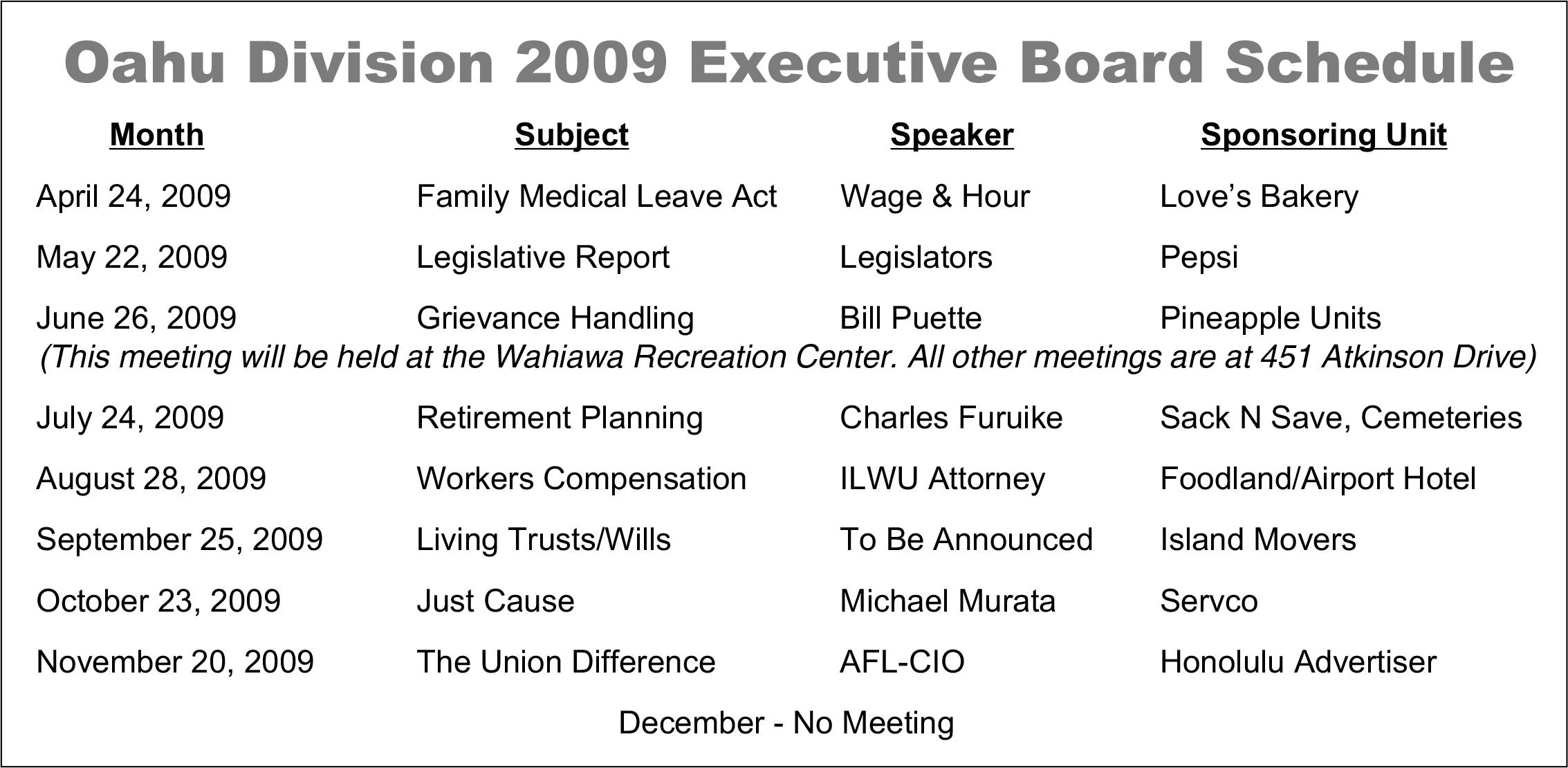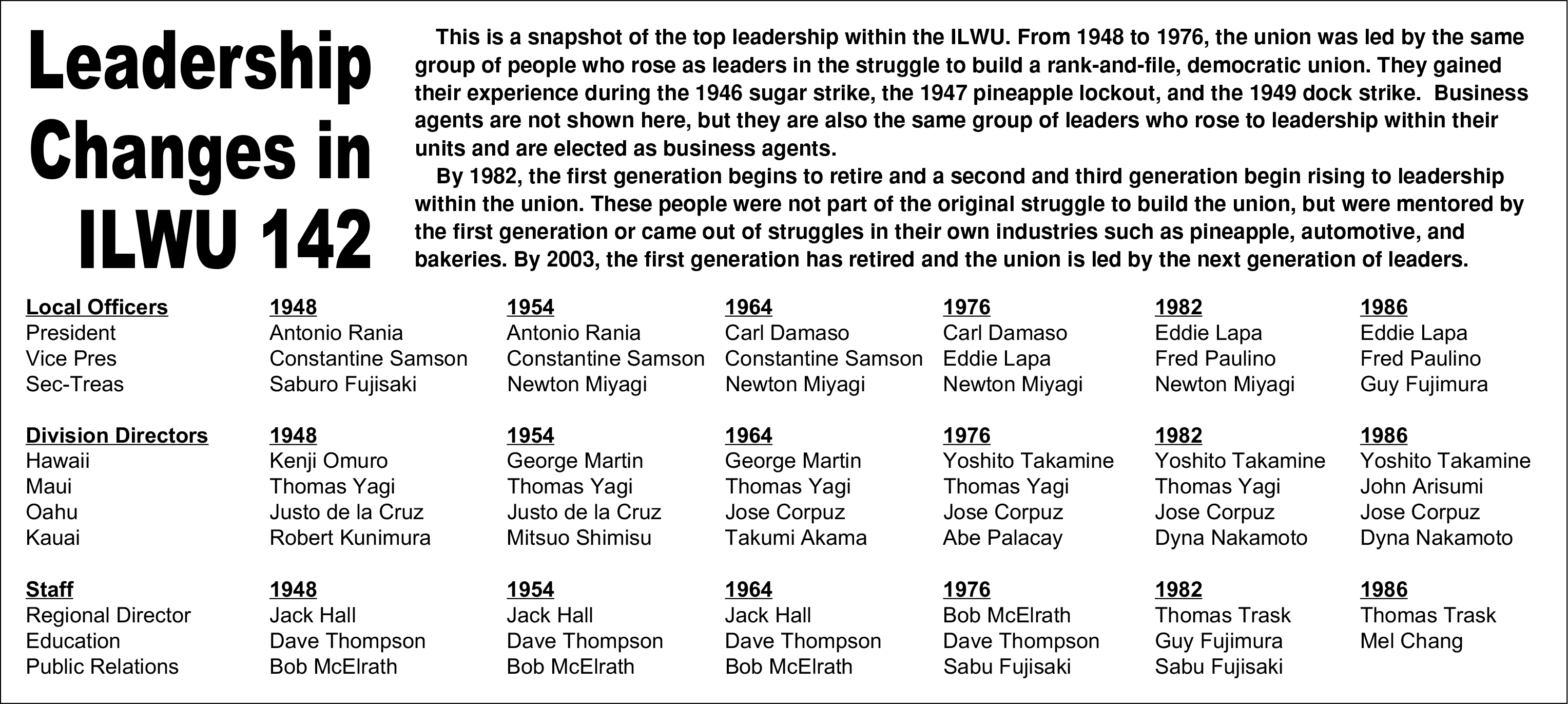To encourage more membership attendance, Oahu Division has turned their monthly executive board meetings into an event that features a productive meeting, education, food, and fellowship.
The evening starts at 6:00 pm every fourth Friday with dinner, which is hosted by a different unit each month. The March meeting will be hosted by the Hawaii Logistics unit, the April meeting will be hosted by the Love’s Bakery unit, the May meeting by the Pepsi unit, and so on.
The actual meeting starts around 7:00 pm. Oahu Division works hard to make the business portion of their meeting interesting. Instead of long reports, each business agent talks about a few of the major developments in the units they service. More details are contained in their written reports, which are made in the form of a newsletter.

Oahu Division Director Dave Mori runs an orderly meeting and the business part is usually completed by 8:00 pm. This leaves an hour for a guest speaker and educational programs on topics such as the Family Medical Leave Act, grievance handling, and workers compensation.
The formal program ends around 9:00 pm, leaving time to talk stories and fellowship with your union brothers and sisters.
Oahu will hold their June meeting at the Wahiawa Recreation Center, which will be hosted by pineapple unit. All other meetings will be at the ILWU Hall on 451 Atkinson Drive in Honolulu.
So mark your calendars and get involved with your union—plan to attend the next Executive Board Meeting on your island.

ILWU built on principles of rank-and-file unionism
The principles of ILWU rank-and file unionism were tried and tested in the battle to organize the union during the 1946 sugar strike.
These principles were written down in this manual on the ILWU Steward on the Job in 1947. These principles proved successful and helped the union win the 1947 pineapple lockout, and the 1949 longshore strike.
The struggle to build the union in sugar, pineapple and longshore produced a generation of exceptional ILWU leaders who ran their units and the union from 1946 to around the mid-1970s. This group of leaders learned how to organize their units, set up stewards’ councils, and educate job stewards with manuals like this one. The manual was their guide, but they would learn much more through on-the-job training and from each other .
They trained the next generation of leaders by their example and through on-the-job experience of handling grievances and organizing the union on the job. More importantly, they passed on the culture of rank-and-file unionism that was unique to the ILWU.
The second generation began taking over leadership of the union in the 1980s. By 1986, only four of the original leaders remained. By 1990, all the original ILWU leaders had retired.
By the year 2003, the second generation of leaders had retired and the ILWU was being run by a third and fourth generation of union leaders. Some of these leaders had the good fortune of being taught about ILWU unionism from the old timers or came from units that still operated as democratic, rank-and-file organizations. However, many of these fourth generation leaders lacked the experience and knowledge of the operational principles of ILWU rank-and-file unionism.
This is why we return to the manuals which taught ordinary workers to build the most successful and powerful union in Hawaii.

